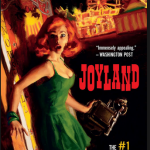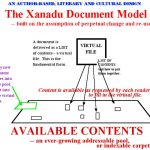
Video ripped from the article Think Retro: RIP Rip, Mix, Burn, 2015.
The technological advancement that occurred roughly at the beginning of the current century heralded in the advent of digital devices that made it practically effortless to obtain media and create personal playlists that could be conveniently loaded on small portable devices or plugged into our vehicles for our listening and/or our viewing pleasure. The article Think Retro: RIP Rip, Mix, Burn talks of how Apple pushed this concept through a commercial shown in the attached YouTube video. Watching this stirred up memories of using digital media to make mix CDs for Discmans and other portable CD players for listening on the go. This was not a new concept to me. Even further back in the dark ages of analogue devices, think 1970s, it was common to buy various albums and cassettes and then proceed to rip, mix, and burn new cassettes of our favourite songs we could then play on our mobile devices that were attached to our vehicles. Portable ghetto blasters with their superior stereophonic capabilities and portable playback devices such as the Walkman were still years away. The mundane cassette recorder/playback devices of the time just did not have the quality sound us audiophiles were looking for. For many years this was the reference I had for the concept of rip/mix/burn.
Three articles from The Electronic Labyrinth readings caused an adjustment of my personal concept of rip/mix/burn, its format potential, and its origins.
In the first to be examined, Death of the Author, Keep, McLaughlin, and Parmar (1993) say
“it is writing that makes an author and not vice versa. “[T]he writer can only imitate a gesture that is always anterior, never original. His only power is to mix writings […] in such a way as never to rest on any one of them” (146). Thus the author cannot claim any absolute authority over his or her text because, in some ways, he or she did not write it.” (Keep, McLaughlin, and Parmar. 1993. See citation for link location).
This stirs and remixes the concept of writing. This passage reduces, or maybe more appropriately repositions, the author as a re-organizer of existing media content. Though simplifying the concept greatly, a writer, therefore, does not produce original content, just creates a unique mix, similar to how we create (and created) our personal playlists.
In the second of the trio of articles, Album Amicorum, the authors tell of how friends and academic peers and professors would contribute to a personal album. The mix of contributions would create a compendium of their academic contacts through their educational journey. This brought to mind my sister’s autograph book that she would have friends, acquaintances, and famous people sign with each passing along some trite tidbit. While moving from the academic theme of the earlier example, it is remarkable that a concept such as this would endure a three hundred year span.
The third, and probably most interesting rip/mix/burn concept noted by Keep, McLaughlin, and Parmar (1993) is the commonplace book. In this media, the better-heeled of society would write down favourite passages in their personal collection of literary pieces. The authors point out the interactive nature of this process, where the commonplace book owner would select what pieces to enter (ripping) and engage in adding them through the physical action of writing them down (burning) in a collection that was unique to them (mixing). Using the technology of the day, the commonplace book owners created their personal playlist of passages they could take with them and consume at their want.
While I knew that there was a bit of cross over between the symbolism between Christianity and Judaism with respect to the Last Supper, I hadn’t really considered this as part of the rip/mix/burn concept. The article From Jewish Passover to Christian Eucharist: The Story of the Todah explains how the concepts in traditions of the Jewish religion were ripped and mixed to create a new centrepiece for Christianity and burning this in the form of the weekly and daily masses in especially the Catholic religion.
While we, and especially Apple, consider the digital age as the enabler of a rip/mix/burn culture, there are many examples from history illustrating how this isn’t necessarily a new phenomenon. We simply are using the technology at our disposal which makes this concept easier to employ at quicker speeds than our ancestors were able to accomplish. Differing eras, same fundamental philosophy. It would be interesting to know if concerns were raised with respect to copyright due to copying into commonplace books so many years ago. Or was this technology tacitly accepted as part of society’s literary evolution?
Reference:
“Discman.” Wikipedia, Wikimedia Foundation, 15 June 2018, https://en.wikipedia.org/wiki/Discman.
Gray, Tim. “From Jewish Passover to Christian Eucharist: The Story of the Todah.” Catholic Education Resource Center, 2002, www.catholiceducation.org/en/religion-and-philosophy/apologetics/from-jewish-passover-to-christian-eucharist-the-story-of-the-todah.html.
Keep, Christopher, et al. “Death of the Author.” The Florentine Chronicle, http://www2.iath.virginia.edu/elab/hfl0226.html .
Keep, Christopher, et al. “Album Amicorum.” The Florentine Chronicle, http://www2.iath.virginia.edu/elab/hfl0173.html.
Keep, Christopher, et al. “The Commonplace Book.” The Florentine Chronicle, http://www2.iath.virginia.edu/elab/hfl0231.html.
Phin, Christopher. “Think Retro: RIP Rip, Mix, Burn.” Macworld, Macworld, 10 June 2015, www.macworld.com/article/2934175/think-retro-rip-rip-mix-burn.html.
“Sony TC-110.” HiFi Engine, www.hifiengine.com/manual_library/sony/tc-110.shtml.
“Walkman.” Wikipedia, Wikimedia Foundation, 10 June 2018, https://en.wikipedia.org/wiki/Walkman.






